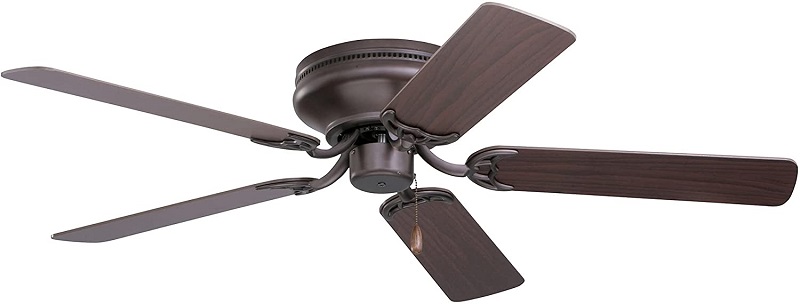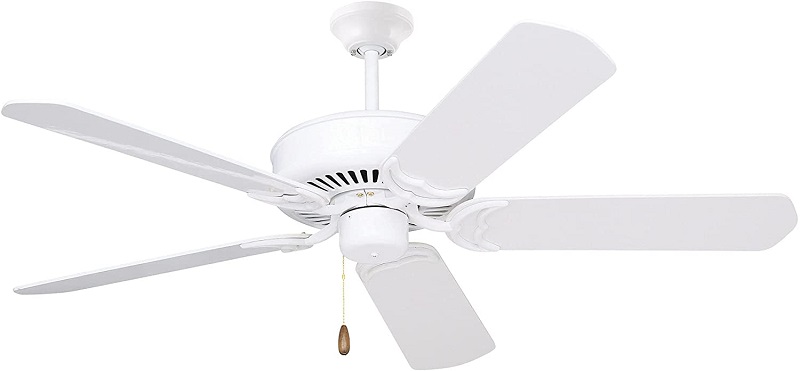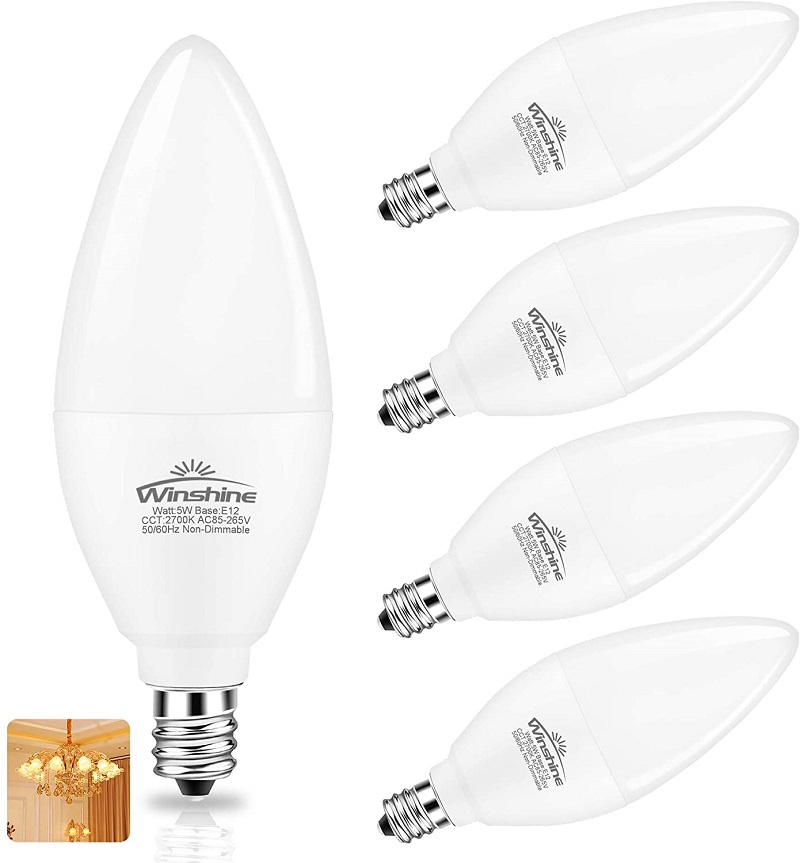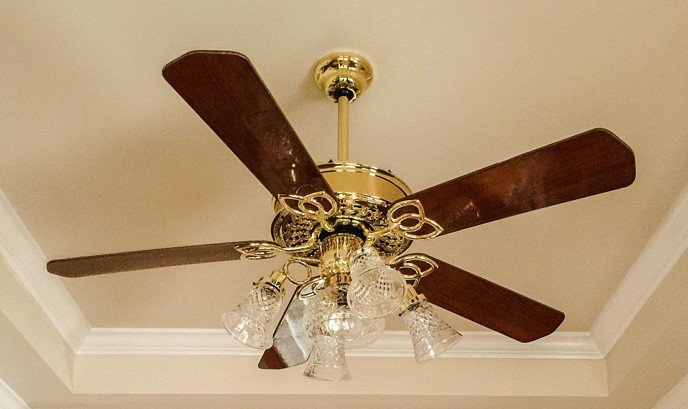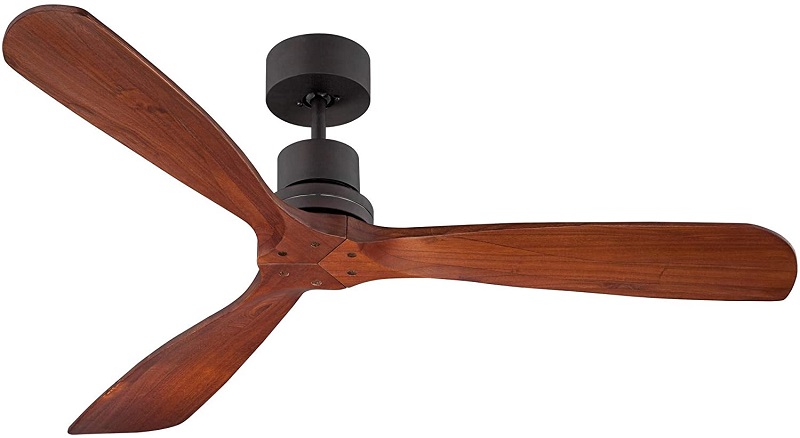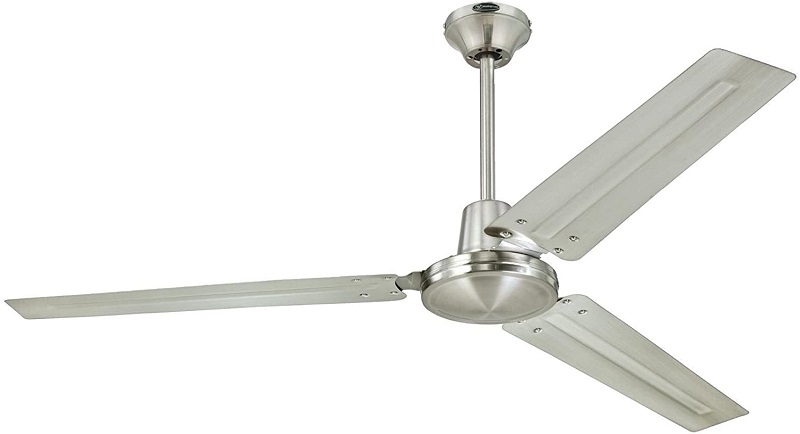Let’s talk about blade pitch. For many ceiling hugger fans, the blade pitch is 10 degrees or less to accommodate the proximity of the fan to the top of the room. The Emerson Snugger Low-Profile Hugger Ceiling Fan offers homeowners a 12-degree blade pitch instead. Although the difference is only a couple of degrees, the improvement in airflow quality is quite profound. This flush-mount design is competitive with any of the best ceiling fans for the bedroom currently available.
You receive 5 reversible blades with this ceiling fan. One side offers a cherry veneer finish, while the other offers a medium oak veneer finish. There are these additional features to consider as well when looking at this ceiling fan by Emerson.
- The housing is offered in three finishes: oil-rubbed bronze, brushed steel, and white.
- Two size options are available for blade width as well. This model is available in a 42-inch size or a 52-inch size.
- Control the ceiling fan by using a standard pull-chain toggle switch. You have access to 3 speed settings from this switch. If you wish, the installation can include a light kit and a wall control, though these are sold separately from the ceiling fan.
We got a chance to take a look at the 52-inch oil-rubbed bronze ceiling fan in this collection by Emerson. Although the other sizes and finishes should perform similarly, that is not something we evaluated.
What to Expect with the Emerson Snugger Ceiling Fan
In total, you’ve got 7 inches from the ceiling to the blades once you have this ceiling fan installed. There’s no real way to improve upon that spacing. If you have a room with a ceiling that is lower than 8 feet, you’re probably not going to want to use this ceiling fan. It would be likely run afoul of local building codes if you did.
Although this ceiling fan is quiet, the proximity of the blades to the ceiling does create an echoing effect for the blade wind noise that all ceiling fans produce. In a smaller room especially, you can hear the wind movement in an amplified way. The motor doesn’t really hum when operating, though it does a little upon startup.
We had a small issue with balance once the installation was completed. Balancing weights were included in the box and this helped to stabilize the fan.
Overall, we felt that the installation process was about as simple as it could be. The directions were accurate and the job was finished in about 30 minutes. The fan performed flawlessly and provided us with no additional concerns beyond what has already been discussed.
Although the Emerson Snugger Low-Profile Hugger Ceiling Fan may be more of an investment when compared to other flush-mount fans, it is a product that will offer consistent dividends all year long for the room where it is installed. Choose your preferred size and finish, and then enjoy what this fan can do as much as we did.
